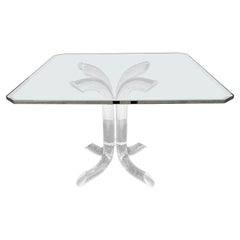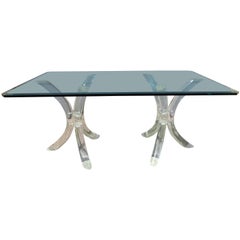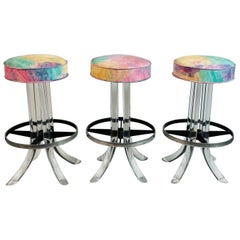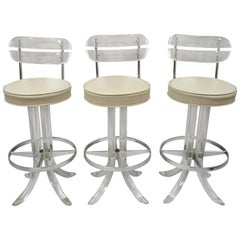Charles Hollis Jones Tusk
Vintage 1970s Mid-Century Modern Dining Room Tables
Lucite, Glass
Vintage 1970s American Mid-Century Modern Dining Room Tables
Glass, Mirror, Lucite
Vintage 1970s American Mid-Century Modern Stools
Steel
Recent Sales
Mid-20th Century North American Mid-Century Modern Stools
Chrome
Vintage 1960s American Dining Room Tables
Glass, Lucite
People Also Browsed
Vintage 1960s Danish Mid-Century Modern Shelves
Metal
21st Century and Contemporary Swedish Mid-Century Modern Table Lamps
Textile
Vintage 1970s American Mid-Century Modern Stools
Brass
Vintage 1970s American Mid-Century Modern Dining Room Tables
Brass
Mid-20th Century Italian Mid-Century Modern Dining Room Tables
Brass, Chrome
Vintage 1970s Unknown Modern Dining Room Tables
Glass, Lucite
Vintage 1980s American Post-Modern Rocking Chairs
Hide, Lucite
Vintage 1970s American Hollywood Regency Dining Room Tables
Lucite
Vintage 1950s Italian Mid-Century Modern Dining Room Tables
Marble
Vintage 1970s American Mid-Century Modern Stools
Chrome
20th Century American Mid-Century Modern Stools
Brass, Chrome
Vintage 1970s European Mid-Century Modern Dining Room Tables
Lucite
Vintage 1970s American Modern Dining Room Tables
Lucite, Glass
Vintage 1970s American Mid-Century Modern Dining Room Tables
Stainless Steel
Vintage 1970s American Mid-Century Modern Stools
Chrome
Mid-20th Century American Mid-Century Modern Dining Room Tables
Stainless Steel
Materials: Lucite Furniture
Antique, new and vintage Lucite furniture has been on design editors’ radars for several seasons now, but thanks to a renewed interest in Lucite coffee tables, chairs and other pieces from the late 1960s and ’70s, the trend has reached fever pitch.
“I think there’s a freshness and cleanness to it,” says Fawn Galli, an interior designer based in New York. Not only is Lucite, or transparent plastic, practical, since it can work in nearly any environment, it’s incredibly stylish.
Some of the most acclaimed furniture designers share the same love for Lucite as an effective and practical material for use in any interior.
“I think there’s something really nice about the simplicity of anything Lucite or acrylic — it feels lightweight,” says Tamara Eaton, whose eponymous firm deftly balances traditional and modern designs. Even in the most historical setting, “you can still introduce some Lucite or something kind of lightweight and not have it feel like a distinct interjection, but a playful one that’s more about the shape,” she says.
For the living room in a mid-century modern townhouse in Park Slope, Brooklyn, Eaton chose a pair of box-shaped Lucite tables with copper handles from Jamie Dietrich. “We didn’t want anything to be too heavy, and that area was a place where [the family] would sometimes move those tables so the kids could play,” she says. The tables doubled as snack trays since the kitchen is nearby. “They have this transportable feel to them that I think was really fun.”
Browse a range of antique, new and vintage Lucite side tables, table lamps and other furniture now on 1stDibs.
Read More
The Ultimate Guide to Types of Tables for the Home
Whether you’re just moving in or ready to give your home a makeover, our guide will give you pointers on tables that are fitting for every room, nook and hallway.
May’s Most Popular Interiors on Instagram
Our feed is filled with the world's most beautiful spaces. See the rooms our followers have deemed the best of the best this month.
New Orleans’ Lee Ledbetter Makes Design Magic by Mixing Past and Present
The Louisiana-born and -bred architect talks to 1stdibs about the art of making timeless places that matter.
Desert Modern Designer Arthur Elrod Finally Gets His Day in the Sun
The Palm Springs interior decorator developed a mid-century style that defined the vacation homes of celebrities and other notables, including Bob Hope and Lucille Ball.
From the Hamptons to Palm Springs, FormArch’s Homes Embody Both Comfort and Cool
The houses from this New York studio cloak modernist tendencies within what are often more traditional trappings.




